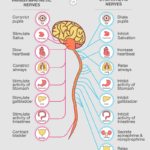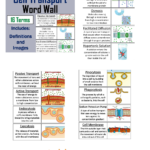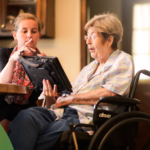Nervous System Physiology Sympathetic and Parasympathetic Nervous System The physiology of the nervous system involves the sympathetic and parasympathetic systems. The sympathetic system triggers the "fight-or-flight" response, which prepares the body for intense physical activity. This system causes the expected bodily changes to occur. On the other hand, the … [Read more...] about Nervous System Physiology: Sympathetic and Parasympathetic Nervous System
Uncategorized
Active Transport and Passive Transport Across A Cell Membrane
Active Transport and Passive Transport Across A Cell Membrane 3 types of membrane transportBasic types of membrane transport, simple passive diffusion, facilitated diffusion (by channels and carriers), and active transport. ♦ Active Transport♦ Carrier Protein♦ Cell Membrane♦ Channel Protein♦ Diffusion♦ Endocytosis♦ Exocytosis♦ Facilitated Diffusion♦ Hypertonic Solution♦ … [Read more...] about Active Transport and Passive Transport Across A Cell Membrane
The Importance of Speech Therapy to Home Health Care
May is Better Speech and Hearing Month, and Amedisys is proud to celebrate the incredible speech therapists who contribute to our tradition of excellent, clinically distinct care in the home. By preventing, assessing, diagnosing and treating speech disorders—including language, communication, cognitive and swallowing disorders, speech therapy is an essential component to the … [Read more...] about The Importance of Speech Therapy to Home Health Care
Stars Academy Lahore MCAT/MDCAT Fee Structure
Stars Academy Lahore MCAT/MDCAT Fee Structure MDCAT Test Fee Structure #ClassFeeBooksTotal1MDCAT STUDY + TEST SESSION245003500280002LMDCAT SESSION345003500380003MDCAT & NUMS SESSION405003500440004ROYAL LMDCAT SESSION46500350050000 … [Read more...] about Stars Academy Lahore MCAT/MDCAT Fee Structure
29 Best Health Care Jobs 2019
Best Health Care Jobs 2019 | Best Jobs Rankings 2019 | US Careers 2019 We ranks the best health care jobs in America by scoring 7 factors like salary, work life balance, long term growth and stress level. … [Read more...] about 29 Best Health Care Jobs 2019



